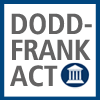- Home
-
News
- Back to parent navigation item
- News
- National Compliance Officer Day 2025
- Accounting & Auditing
- AI
- AML
- Anti-Bribery
- Best Practices
- Boards & Shareholders
- Cryptocurrency and Digital Assets
- Culture
- ESG/Social Responsibility
- Ethics & Culture
- Europe
- Financial Services
- Internal Controls
- Regulatory Enforcement
- Regulatory Policy
- Risk Management
- Sanctions
- Surveys & Benchmarking
- Supply Chain
- Third Party Risk
- Whistleblowers
- Opinion
- Benchmarking
- Certification
- Events
- Research
- Awards
-
CW Connect
- Back to parent navigation item
- CW Connect
- Sign In
- Apply
- Membership
THIS IS MEMBERS-ONLY CONTENT
You are not logged in and do not have access to members-only content.
If you are already a registered user or a member, SIGN IN now.
Related articles
-

-
 Article
ArticleTariff evasion enforcement: The new FCPA
2025-12-24T16:46:00Z By Jaclyn Jaeger
Companies that import goods into the United States will face heightened enforcement scrutiny for attempted acts of customs fraud, including tariff evasion, under the Trump administration. Thus, chief compliance officers and in-house counsel face a new kind of pressure to ensure they are mitigating risk in this area.
-
 Article
ArticleFormer COO of plastics importer faces up to five years for customs falsifications
2025-12-24T13:54:00Z By Adrianne Appel
The chief operating officer of a plastic resin importer has pleaded guilty to intentionally falsifying documents to avoid paying tariffs on goods from China, the Department of Justice (DOJ) announced.
- Terms and Conditions
- Privacy Policy
- Do Not Sell My Info
- © 2025 Compliance Week
Site powered by Webvision Cloud







